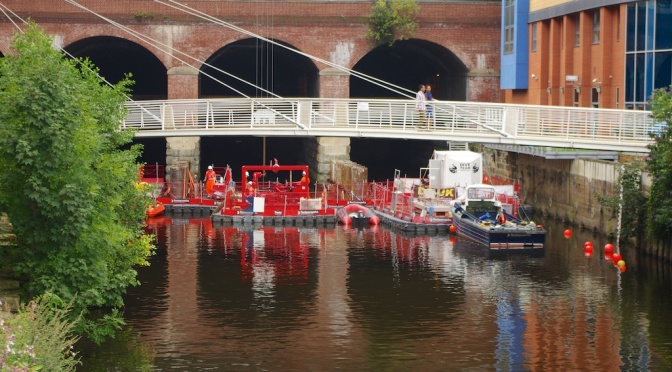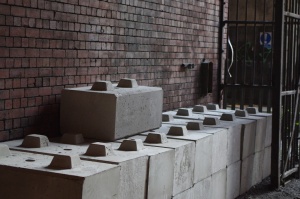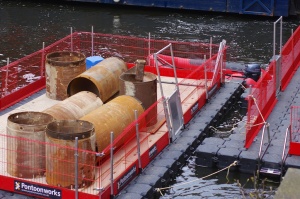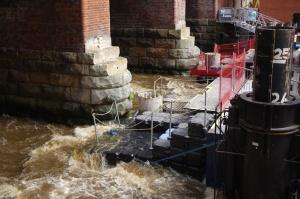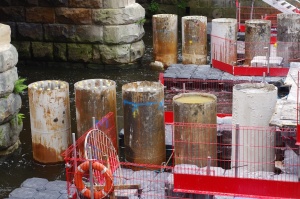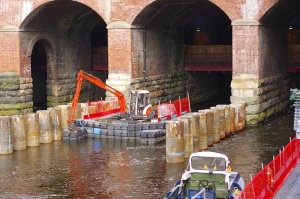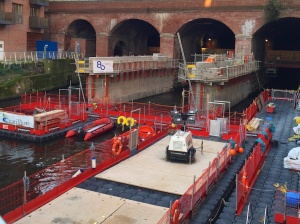My wife, let’s call her R, and I are both project managers at heart. So when in the summer of 2013, she was diagnosed with breast cancer, we both went into project mode. When starting any project we need information – what, how, when, why, where etc. Whilst there was lots of information for the patient, there appeared to be very little for the partner. I wanted a project plan that I could follow and know that I was doing the right things. Guess what – it didn’t exist. Every cancer and patient is different so such a list would be impractical. Instead, based on my experience, here are a few practical tips.
Tips
- Get the facts. Don’t be afraid to question your consultant. He or she will not guarantee a cure. Instead, they will talk about statistics and survival rates. Each treatment will increase the chances of survival but by how much?
- Take a notebook to all appointments. Write questions beforehand and take notes during. The chances are, for early appointments at least you will be in a state of shock. Much safer to write things down.
Supplement your knowledge with reliable sources. The MacMillan website has tons of information, as does Breast Cancer For Dummies (I kid you not!). The latter is written by an American so has chapters about the healthcare system that you don’t need but lots of stuff you do. - Take the time to talk things through and decide together a communications plan (Told you we were project managers!). Who will you tell? Family, close friends, boss – almost certainly. The world via Facebook or nosey neighbours – maybe not. Better to agree up front. We consciously decided not to go public on Facebook. This effectively meant keeping the news from some friends for several months but we thought that was better than contacting people we see intermittently, just to pass on the news. Again, everybody is different.
- There will be tears for both of you. They are natural and part of the process. Don’t promise that everything will be OK – you can’t control that. But, if you have asked the right questions and written down the answers you will understand the odds that it will be OK! Julia Fordham wrote “Don’t tell me to stop crying please, just hold me while I do”. That’s your job – get on with it.
- Think about the practicalities and discuss the situation with your boss. Mine was great, giving me the flexibility to attend appointments etc. but I was careful not to abuse it too much.
Talk about the support she will need throughout the treatment. Try to find a balance between independence and smothering! I attended all of the consultations so we could both get information. For the surgery phase I was practical support – driving, carrying bags, visiting etc. However, I didn’t attend the Chemo sessions as she wanted to focus on getting through the day (headphones and iPad were essential). The most stressful part of the whole treatment was when a partner of another patient spent the day in the treatment room working on a laptop and constantly taking phone calls. As I said before, everybody is different and this worked for us. I did the driving, dropping off at the door and picking up when she was ready. - Pay attention to what the nurses tell you! You may be called upon to change dressings, empty drains etc. It will be a lot less stressful if you watched the demonstrations and don’t appear too cack handed.
-

Hats are a great alternative to wigs Hair loss is a real possibility with Chemotherapy. Discuss your feelings and offer support. When it started to go, R decided she wanted it to go quickly. On the Sunday morning before her second cycle, I cut it very short for her and used my beard trimmer to get it even. Although upsetting, we both found it therapeutic (taking control) and even ended up having a laugh (probably best to avoid the term slap head if you want things to go well)
- R tried a wig but only wore it once, finding it uncomfortable and itchy. Instead she ended up with a large collection of soft hats and turbans (www.suburbanturbans.co.uk) that looked great, were comfortable and, over the winter, kept her head warm. She wore a particularly soft, pale blue number in bed which, unfortunately, picked up any stray light, giving a slightly ghostlike appearance in the early hours!
- Remember, when she asks if she looks OK in the wig, hat or whatever, she is actually saying ‘tell I look fabulous”.
- Talk about the treatment and agree that you will be resolute. We discussed how difficult the treatments could be but that, come what may, it was the right thing to do. So, when she had a difficult reaction to cycle 4 and wanted to quit, I was ready with the statistics and the reminder of the conversations. She continued the treatment and was relatively OK with the other cycles.
- R took advantage of professional massages and found them a great help with the discomfort during Chemo. The Haven have several centres in the UK and other services will be available in your area. They also offer counselling for patients and partners.
- Try to keep physically active. The fitter you both are, the better you will deal with the regime. Once recovered from the worst effects of the Chemo, she decided to walk to and from the hospital for the daily Radiotherapy. The exercise seemed to help, both physically and psychologically. For yourself, never underestimate the number of times you will be making cups of tea etc. Fitness is important!
- Treatment can be a long slog. Promise yourselves weekends away, nights out etc. between cycles. Set some goals. R entered the Jane Tomlinson 10k and completed it around 16 weeks after completing treatment.
- Radiotherapy will leave her very tired, probably for several months after completion. Make sure she phases a return to work (and still keep making the cups of tea)
If you are just at the early stages and looking around for help, don’t be afraid to talk. Don’t feel you have to ‘man up’ and hide everything. Counsellors can be recommended by the hospital or your GP and can be very useful. Eighteen months on, life is good. Not the same as it was but definitely good. Stick with it, you will get through it.
Please feel free to leave comments, did you find this useful, do you have other tips etc.
FFF


